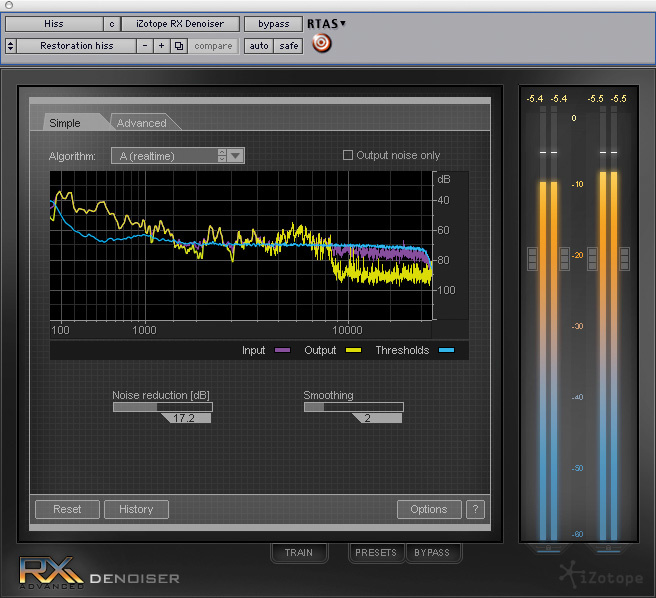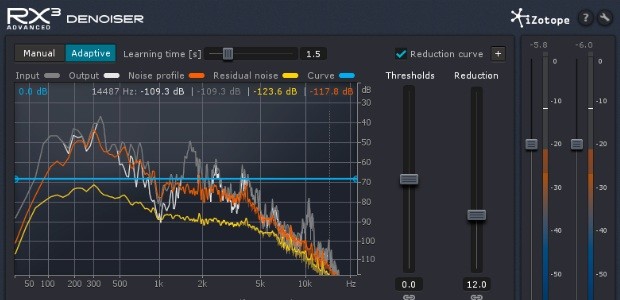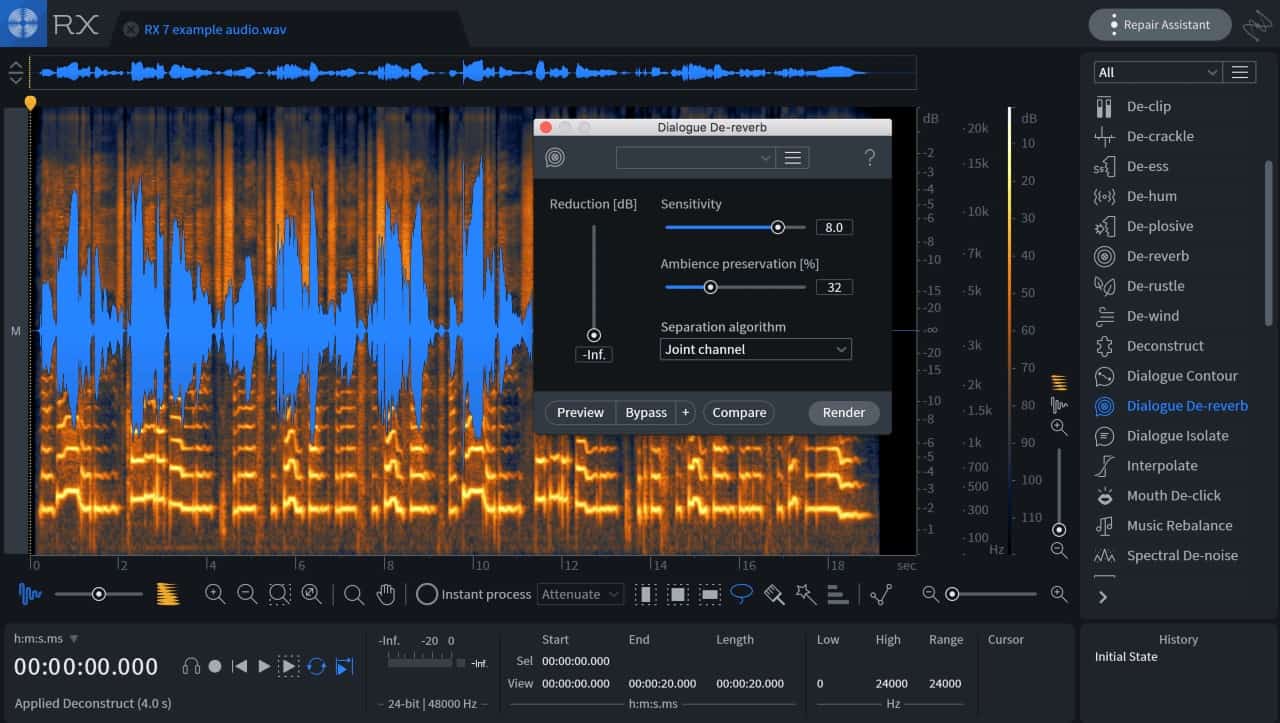
With a DeClick level set to "1", it is not uncommon to get no repairs at all or something like 43 in the left channel and 7 in the right per rip. One of my favorite tests was to take final "clean" rips done by others and then send them thru ClickRepair using different DeClick levels.

I have done extensive testing using the various settings in ClickRepair. All of the music is identical to the original file except a few samples either side of the click or pop. If you have a music editor, you can take the file before and after processing through click repair and subtract them so you see only what click repair changed. I did quite a bit of experimentation when I first started using it to confirm that this is the case. It does not affect the vast majority of the music file. Keep in mind that click repair only affects the few samples around the transient it detects. If you still get some actually clicks and pops, then raise it. If it sounds at all like it has a beat like the song, then lower the threshold. With a little practice it isn't hard at all.īut if that is too much work, then I suggest just starting at about 15 and just listen to the 'noise'. As I move through the track, I vary the threshold setting so that I stay as high as possible, but below the level that gives me too many false detections. Remember I am deciding for each detection whether to accept it or not, so it isn't an issue of screwing up the music, it is just an issue of how much time I'm willing to spend sorting through all of the false detects. I keep it as high as possible without getting a whole lot of false detections. Then as the music starts, I will reduce the threshold as required. This gets rid of all of the 'static and pops' at the fade in. I will start the track with a high setting (like 60) and start processing. I change the threshold setting as I go through the track so that I don't get a huge number of 'false' detections, but still eliminate all of the clicks and pops that are audible.

Then you can accept the repair it suggests, or if you think it is a music transient, you can ignore it (not apply the change). I set it to run in a semi-automatic mode where it stops on each place it identifies a click or pop.

I generally run from a setting of 10 - 15 for passages with a lot of music transients to as high as 50 or 60. Louder, more dynamic passages require a different setting than quiet passages. In fact, I change mine throughout the song to get the best setting. But the setting will be different from one album to the next and even one song to the next. Set it to listen to just the noise, and if you can hear anything that sounds like the beat of the music, then you are affecting the music transients, and you need to lower the threshold.
#Izotope declicker manual#
The best method is (like pointed out above), to run it in a manual or semi-automatic mode, where click repair suggests a repair, but you decide on a case by case basis if the repair is actually a click or pop or if it is a music transient.īut if you prefer a more automatic (set it and go) method, then you need to do a bit of experimentation. I can't see that leaving it sounding 'bright'. The danger is that it might misidentify some music transients (such as percussion) as noise clicks or pops and affect them. I don't see how click repair can affect the bass.


 0 kommentar(er)
0 kommentar(er)
